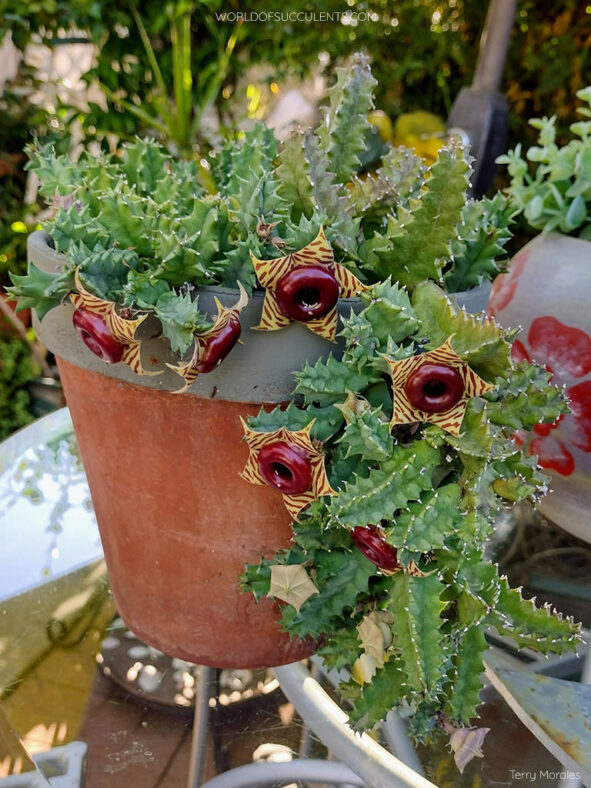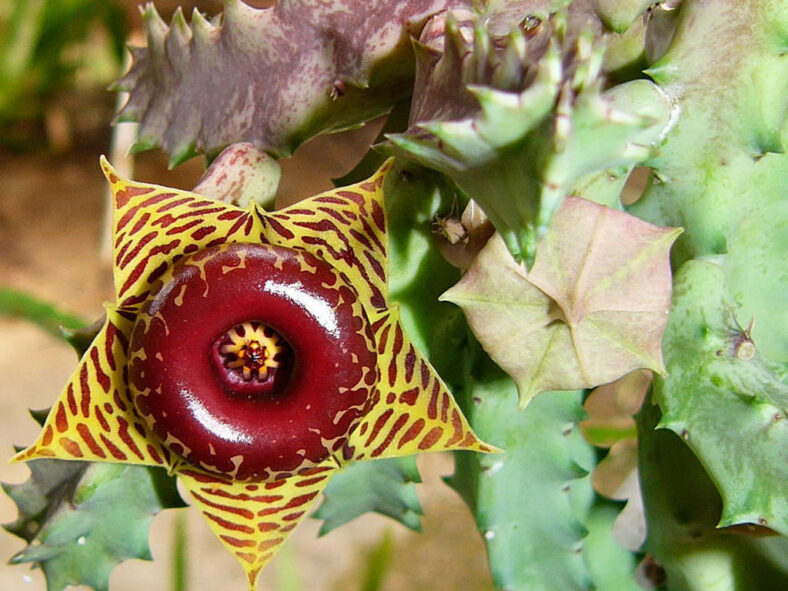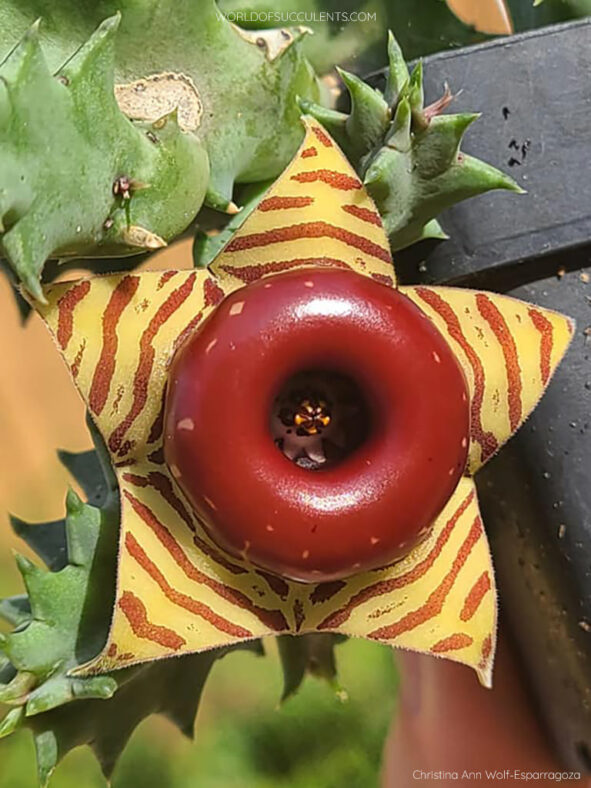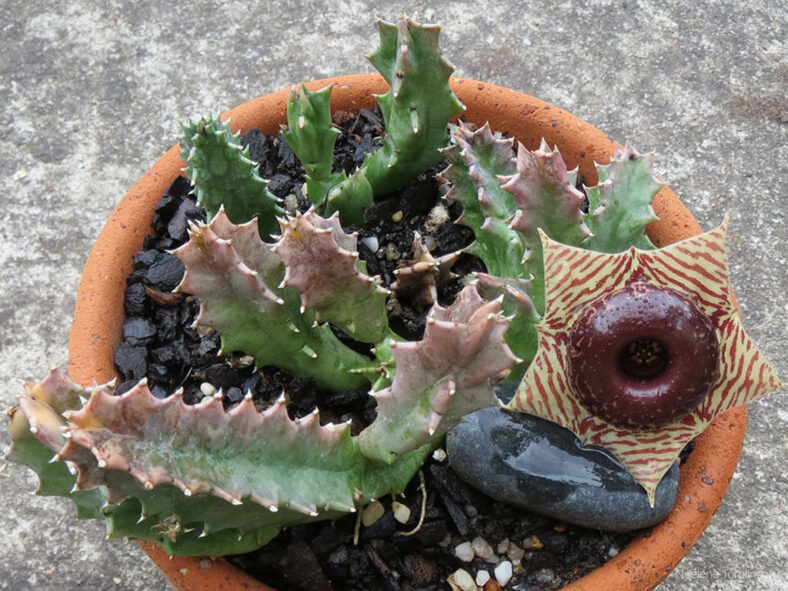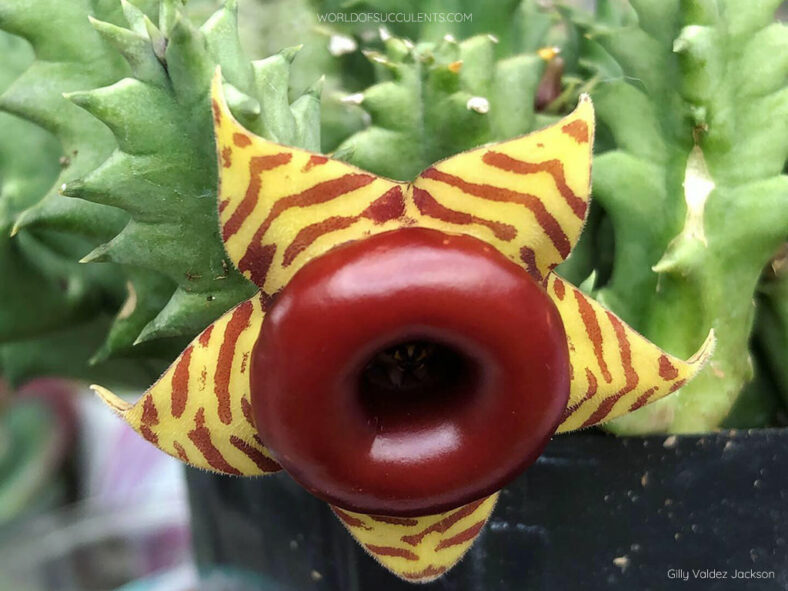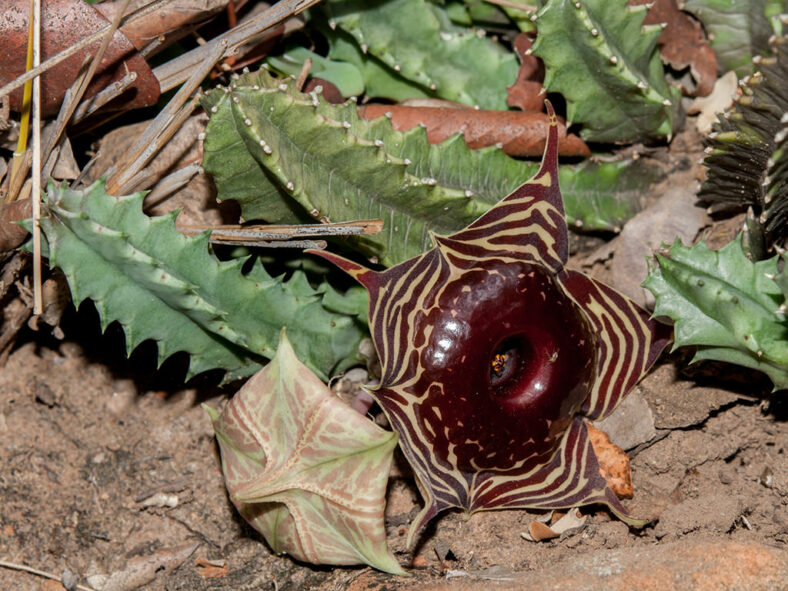Huernia zebrina is a recipient of the prestigious UK's Royal Horticultural Society's Award of Garden Merit.
Scientific Name
Huernia zebrina N. E. Br.
Common Name(s)
Carrion Flower, Lifesaver Plant, Little Owl, Little Owl Eyes, Owl Eyes, Zebra-stripped Huernia
Synonym(s)
Ceropegia zebrina, Huernia zebrina subsp. zebrina
Scientific Classification
Family: Apocynaceae
Subfamily: Asclepiadoideae
Tribe: Stapeliae
Genus: Huernia
Etymology
The specific epithet "zebrina" (pronounced "zeb-REE-nuh") means "with stripes like a zebra" and refers to the striped flowers.
Origin
Huernia zebrina is native to Mozambique, Zimbabwe, Namibia, South Africa (Limpopo, Mpumalanga, and KwaZulu-Natal), and Eswatini. It grows in open dry scrubland, in stony areas, often in calcrete or hard loamy soils.
Description
Huernia zebrina is a small succulent with erect to decumbent stems with deltoid tubercles joined into 4 to 6 angles along the stem. This plant can form a clump reaching up to 20 inches (50 cm) in diameter. The stems are grey-green and usually mottled with purple. They are fleshy, irregularly branched, and can grow up to 4.8 inches (12 cm) long and 0.8 inches (2 cm) thick (excluding teeth). The tubercles can grow up to 0.3 inches (0.7 cm) long and narrow abruptly into a slender tooth.
From late spring to early fall, Huernia zebrina produces inflorescences of 1 to 3 star-shaped flowers on short stalks. The flowers can reach up to 2 inches (5 cm) in diameter and develop in gradual succession. The corolla is cream to greenish-yellow with irregular, red-to-maroon transversal lines on the lobes, changing to dots on the shiny annulus, often coalescing there, and uniformly red to maroon in the tube. On the outside, the corolla is cream-colored, often mottled with reddish behind the annulus and on lobes, and with one heavy raised longitudinal vein running down the center of each lobe. The corona is about 0.25 inches (0.6 cm) wide, with cream outer lobes with red-to-maroon margins and red-to-maroon inner lobes with bright yellow dorsal gibbosity.
Subspecies and Forms of Huernia zebrina
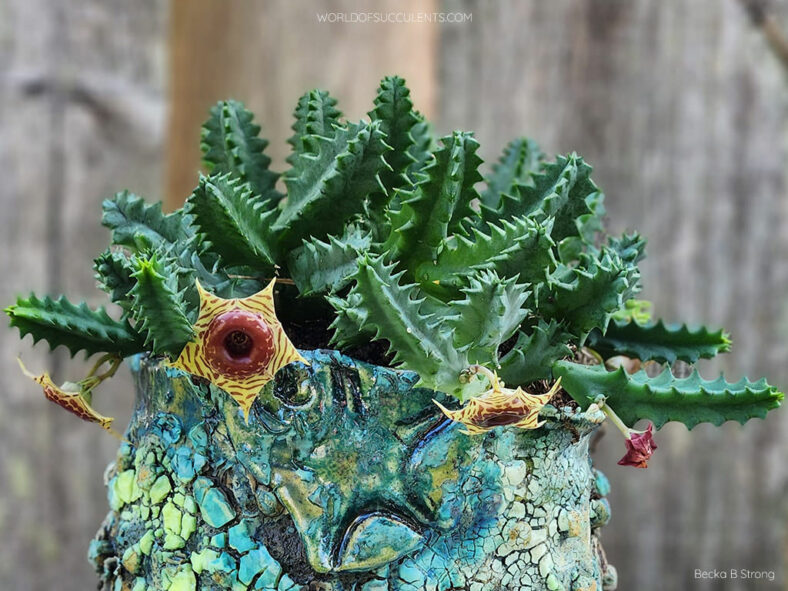
How to Grow and Care for Huernia zebrina
Light: Huernia zebrina prefers bright light or partial shade during the hottest summer days. Too much sun can cause the stems to develop a protective pigmentation or get sunburned. Too little light leads to weak, thin stems and decreased flower production. When grown indoors, place the plant near the brightest window of your home.
Soil: The right soil is crucial to successful growing. Use a commercial potting soil mix for succulents, or prepare your own with 50 to 70 % mineral grit, such as coarse sand, pumice, or perlite.
Temperature: Huernia zebrina thrives in warm outdoor environments with low to moderate humidity but does not like winter cold and should remain fairly dry and warm during its winter dormancy. It grows best in USDA Plant Hardiness Zones 10a to 11b, with average minimum winter temperatures ranging from 30°F to 50°F (-1.1°C to 10°C).
Watering: This plant has typical watering needs for a succulent. During the growing season, water it thoroughly and allow the soil to dry between waterings. It goes dormant in winter and needs almost no water, about once a month.
Fertilizing: To keep it healthy and thriving, fertilizing during the growing season is a good idea. Feed with water-soluble fertilizer diluted to half the recommended strength.
Repotting: The plant will benefit from fresh potting soil every 2 or 3 years. Repot it in spring, just before the growing season. Pick a container with drainage holes.
Propagation: The best way to propagate Huernia zebrina is by stem cuttings. Take cuttings during the growing season to ensure good rooting. It is also easy to start from seeds in spring.
Learn more at How to Grow and Care for Huernia.
Toxicity of Huernia zebrina
Huernia zebrina has no toxic effects reported, so it is safe around pets and humans.
Links
- Back to genus Huernia
- Succupedia: Browse succulents by Scientific Name, Common Name, Genus, Family, USDA Hardiness Zone, Origin, or cacti by Genus
Photo Gallery
Click on a photo to see a larger version.
